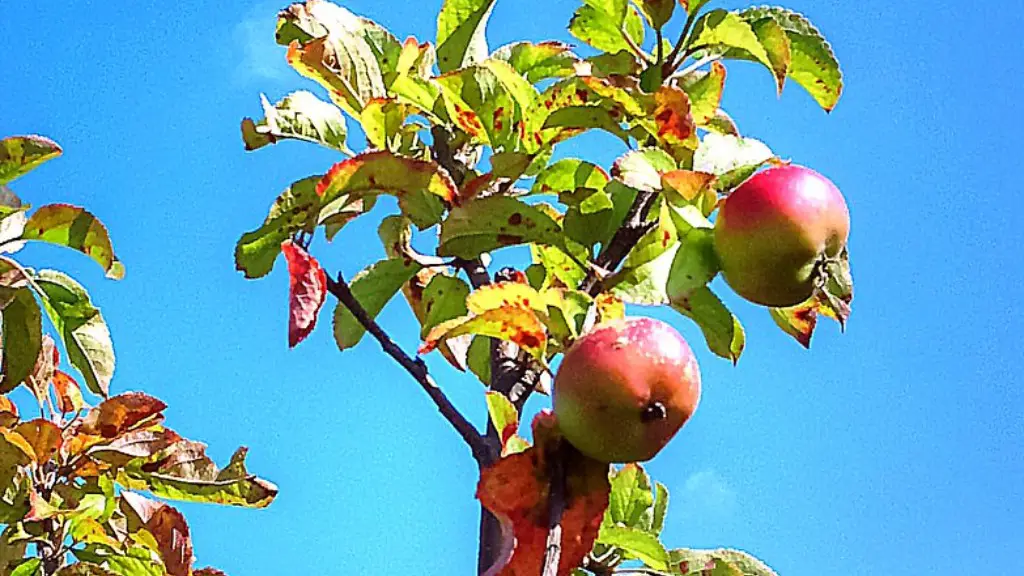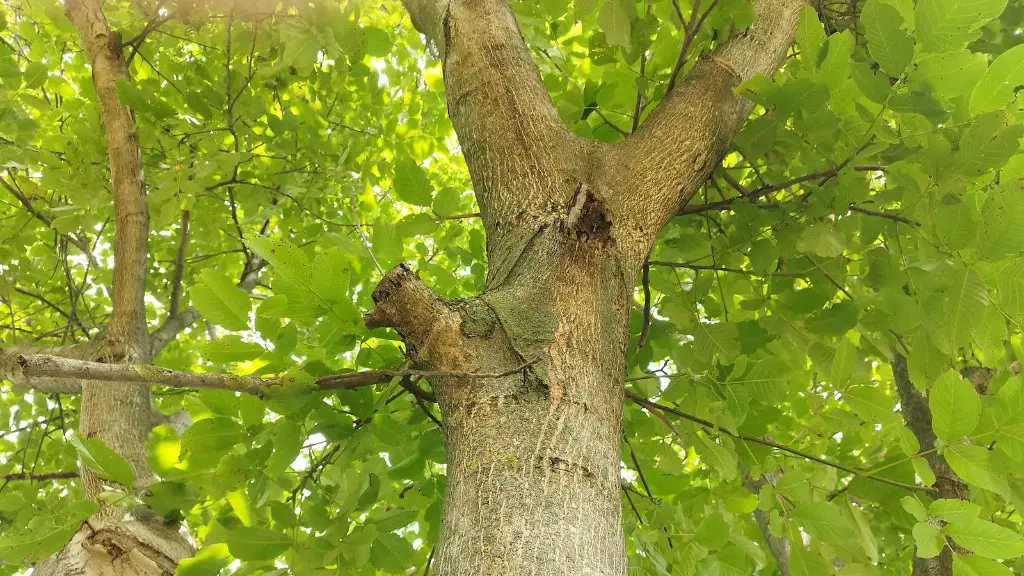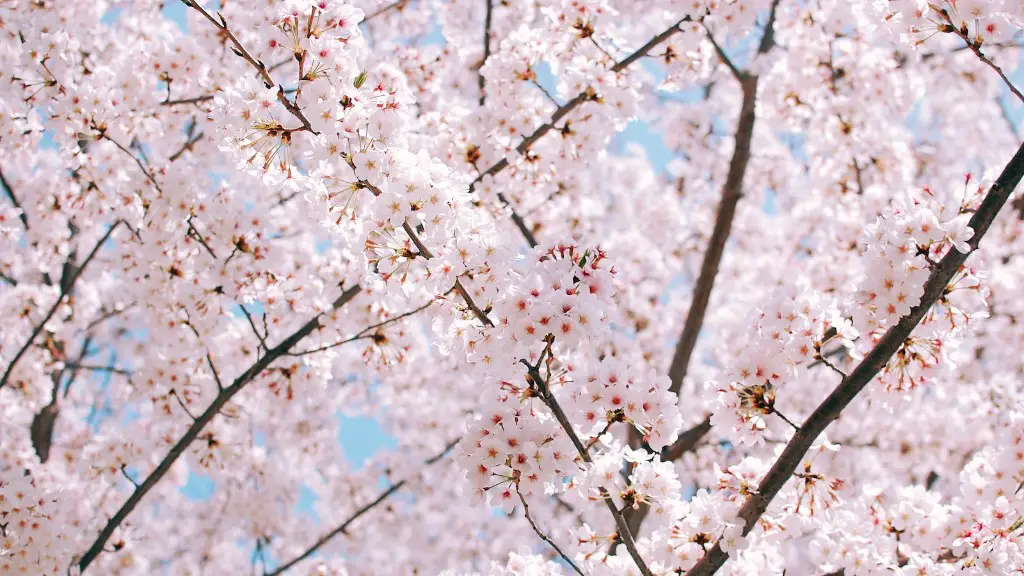Most of us are accustomed to lemon trees growing in our gardens or nearby yards. We have fond memories of picking lemons off the tree and savoring the taste of its delicious fruits. But often, people do not realise that lemon leaves do not always grow back after they are picked or damaged. To understand why, we must take a deeper look at how lemon leaves grow and why they may not regenerate.
In order for lemon leaves to regrow, they must be planted in an environment with the right conditions: the right amount of light, warmth and water. If these conditions are not met, the leaves cannot photosynthesise and eventually may start to die. Even when the temperature, water and light are ideal, the time it takes for a lemon tree to re-produce leaves can depend on the amount of damage done to the tree.
Lemon trees can also suffer from a range of other conditions that contribute to the death of their leaves. For instance, infestations of pests like nematodes, fungal infections, and other diseases can prevent the regrowth of leaves. Additionally, if the lemon tree has been severely pruned, that too can impede its ability to produce new foliage.
Therefore, it is important to understand the needs of your lemon tree and make sure that its environmental requirements are met. By doing this, you could potentially increase the chances of its leaves I growing back after being damaged or pruned. Furthermore, it is important to regularly inspect the tree for any signs of infestation or infection, as these can also hinder regrowth.
The wellness of your lemon tree is also key to making sure its leaves regenerate. Lemon trees that are well taken care of, with their nutrients and water levels regulated and pests repelled, have a much greater chance of keeping their foliage healthy. If a tree is not well taken care of, it will be much more vulnerable to disease and ultimately the dieback of its leaves.
How To Stimulate Healthy Leaf Regrowth
Although lemon leaves may not always regrow naturally, there are a few ways that you may be able to stimulate new growth. Firstly, you can reduce the amount of stress placed on the tree. This can be done by avoiding over or under watering, or by slowly and steadily increasing the temperature or water levels to their ideal amounts.
It is also important to monitor the nutrients of the soil and fertilise when needed. By providing the tree with the essential vitamins and minerals it needs, you can help it to produce healthy foliage. Additionally, you can evaluate the soil’s pH balance and amend if needed.
Finally, proper pruning can help to stimulate the growth of new branches, which in turn can promote the production of new leaves. Before pruning existing branches, however, it is important to cut off any diseased branches and protect the lemon tree from future infestations.
When to Seek Professional Help
If you find that your lemon tree’s leaves are not regrowing, it could be a sign that something more serious is going on. In this case, it is a good idea to seek expert help. By consulting a professional, you can evaluate the health of the tree and get advice on potential treatments.
In addition, expert advice can be beneficial in diagnosing any underlying issues and reducing the risk of infestations or infections. Professional help could also be useful in the selection of fertilisers, weed killers and other species-specific tools to promote healthy foliage.
Common Problems That Can Prevent Regrowth
Although conditions like light, water and heat can all affect the regrowth of lemon tree leaves, there are also a few common problems that could inhibit regrowth. These include poor soil quality, incorrect planting of trees, incorrect pruning and nutrient deficiencies.
To prevent these from occurring, it is important to purchase healthy, disease-free trees and properly transplant them into the ground. It is also important to select a soil type that is well-draining and adequately enriched with organic matter. Additionally, you should ensure that your tree is planted in an area with the right amount of sunlight and air circulation.
Finally, it is important to understand the right techniques for pruning trees, as well as the right fertilisers and soil amendments that can help to promote healthy foliage. By doing so, you can ensure your lemon tree is getting the best possible start in life and increase the chances of its leaves regrowing.
Pests and Diseases That Can Affect Leaf Regrowth
In addition to the environmental conditions, pests and diseases can also play a role in inhibiting the regrowth of lemon leaves. Common examples include aphids, spider mites, whiteflies and mealybugs, all of which can cause the tree to become weak and vulnerable. If the infestation becomes too severe, it may lead to the dieback of the tree’s foliage.
Additionally, certain fungal infections, blights and viruses can also have a severe impact on the health of a lemon tree. Again, if not treated early, these can lead to the dieback of the tree’s leaves and drastically reduce the chances of them regrowing. Thus, it is important to keep a watchful eye for any signs of pests or diseases, so as to avoid them from becoming a more serious issue.
Protecting Your Lemon Tree From Further Damage
Finally, in order to protect your lemon tree from further damage and increase the chances of regrowth, there are a few things you can do. Firstly, it is important to monitor the tree regularly and look out for any signs of pests or diseases. If you spot any, you should take the necessary action to resolve the issue quickly and effectively.
Secondly, it is a good idea to ensure the tree is not being over-pruned. The tree should be pruned enough to encourage new growth, but not so much that it will stunt the tree’s natural progress. Additionally, you should make sure that the tree is getting its enough water, nutrients and sunlight to promote healthy growth.
Finally, you should also ensure that any dead wood on the tree is removed and addressed. Dead wood can act as a breeding ground for pests and diseases, so it is important to regularly remove any dead leaves or branches.




